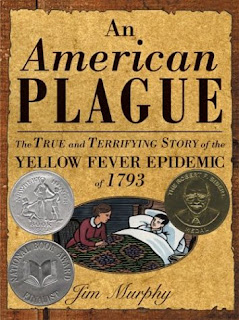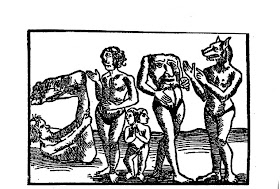One the neatest meals we ate was shabu-shabu. Shabu-shabu is a traditional Japanese meal where you eat in your own little room which has tatami mats on the floor and rice paper walls. You remove your shoes before entering the room and sit on little cushions. In the middle of the table is a pot of boiling water and your meat is served in very thin slices which you cook yourself. Two funny things happened at this meal: 1) I saw slippers where you take your shoes off and took off my shoes and stepped up into the room with them on! They quickly motioned me "no!"...those shoes were for going to the bathroom....oops! 2) My brother ordered potatoes as part of our traditional meal...they brought out a bowl of french fries and ketchup!!! (Photo of my brother & his girlfriend. I didn't take any photos of me here!)
On another day, we ate at a stand outside of the zoo. The other 3 ate pizza (which was good!) while I had to try this cute panda. It was a pastry with powered sugar dusted on it. We think the brown part is a kind of bean curd paste. This was good!
The Tokyo zoo, Ueno Zoological Gardens, sits in a park called Ueno Park. This little stand was also in Ueno Park. These are bananas which are dipped in different colored frostrings and then decorated. Alex bought a set of 3 adorable mice! They looked CUTE, but we didn't like the taste that much.
Alex also bought some ice cream in Ueno Park. (We wanted to try everything!) They had really unusual ice cream flavors and we just had to order by the pictures. We did recognize "milk" (vanilla), green tea, an orange fruit, and cantaloups (which is what Alex had). Yummy!
This was one of my favorite meals in Japan. I had pot stickers and noodles. Oh, it was SO delicious!!! In fact, we all had a variety of pot stickers and noodles. So yummy!
There are a lot of machines in Japan that sell a variety of things - not just food! But, at the train depot one day, my brother bought some banana hot chocolate. Agian, we had to go from photos (although you can read the English word "hot").
This restaurant was in Akihabara, the Electric City of Tokyo. It was probably my least favorite meal, but it was still neat. The center of the table is a hot plate.
Here's a photo of the food from that place. You used the spatulas (on other photo) to kind of chop off a section and put it on your plate to eat.
To give you an idea of how we ordered, here is a photo of the menu...yes, it is all in Japanese! But, the waiter spoke some English. (This was often the case.) On the lower left hand corner, for example, they would tell us that was the beef section. So, we could see all the different prices of 'beef', but we really didn't know what the words meant. We would pick a middle-priced meat and order it. We often ordered a lot of food both to try more things and because we weren't sure what we'd like. We liked most of the food we tried!
Here's my brother & his girlfriend at a sushi train. To the right you can see the plates of food. They are on a conveyor belt and you pick up what you want from the train. The plates are color-coded so you can see how much they cost. I don't care much for sushi, though they really enjoy it. Alex & I did enjoy some desserts, though!
We only ate "American" food twice while in Japan - once at McDonald's and once at Subways. At the McDonald's, it was just Alex & myself and they didn't speak any English and they didn't have an English menu! They handed me a menu with photos and I pointed to what we wanted. But, they didn't have a water showing and I couldn't explain it, so I got an orange juice instead! Also, we got chicken strips and they still had the skin on it and they were pretty greasy. We didn't care much for it! At Subway, the food offered was also different. I usually have the sweet onion chicken teriyaki. Well, they didn't have that sauce, so I had Caesar dressing instead! Alex had ham & cheese, but we ended up trading. My brother had egg!
Here's the last photo. Alex bought this out of a machine at our hotel the last day. It's called "calpis" and it is DELICIOUS! When we bought things out of the machines, we had to be careful as they also sell alcohol out of them! And, I wasn't sure how to tell the difference! I just tasted it first and it tasted non-alcoholic. And, we looked at the labels to make sure it didn't look like something that contained alcohol.


























